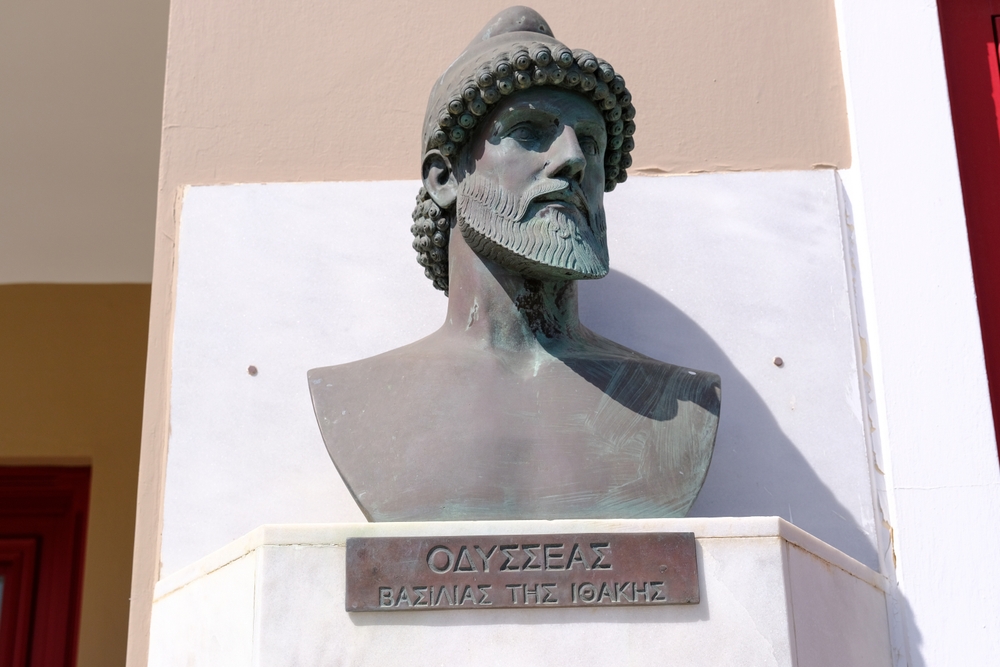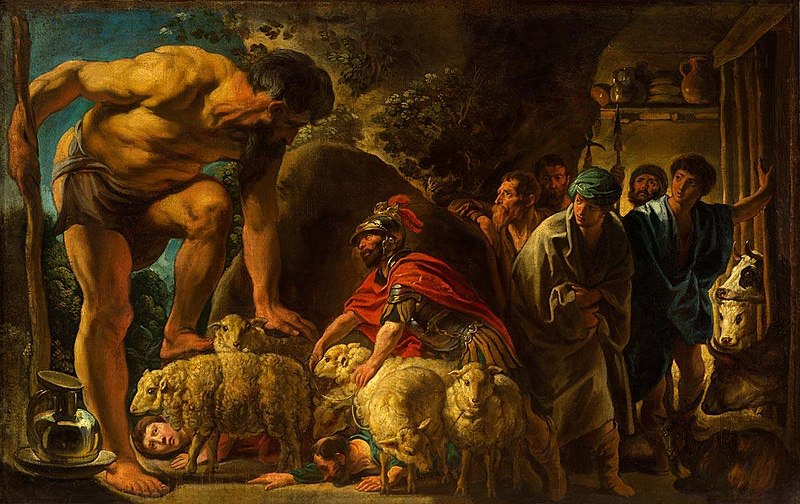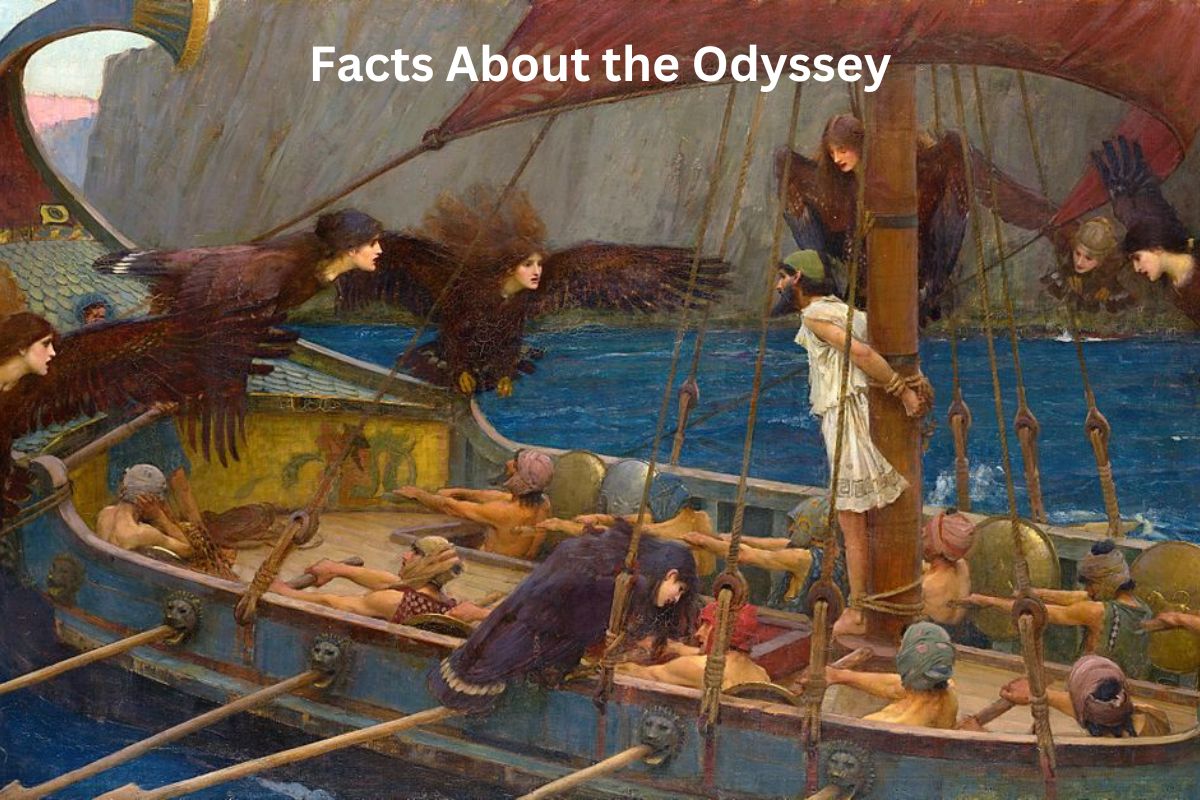The Odyssey is a celebrated epic poem attributed to the ancient Greek poet Homer. Believed to have been composed around the 8th century BCE, it is considered one of the foundational works of Western literature.
This remarkable narrative follows the Greek hero Odysseus as he undertakes a perilous journey back to his homeland of Ithaca after the Trojan War.
Throughout his ten-year odyssey, Odysseus encounters mythical creatures, faces numerous trials, and navigates the complexities of loyalty, heroism, and the longing for home.
The Odyssey continues to captivate readers with its rich storytelling, exploration of profound themes, and enduring influence on literary traditions.
The Odyssey Facts
1. The Odyssey is an epic poem attributed to Homer
The Odyssey is a work of ancient Greek literature that is attributed to the poet Homer, although there is ongoing scholarly debate about the authorship of the poem.
Also Read: Greek Mythology Facts
It is one of the two major surviving ancient Greek epic poems, along with the Iliad.

2. It follows the adventures of the Greek hero Odysseus
The Odyssey centers around the Greek hero Odysseus (also known as Ulysses). After the Trojan War, Odysseus embarks on a perilous journey back home to Ithaca, facing numerous challenges and encountering mythical creatures and gods along the way.
3. Odysseus is trying to return home to Ithaca after the Trojan War
The primary goal of Odysseus throughout the epic is to return to his homeland, the island of Ithaca, after the conclusion of the Trojan War. His journey home, however, is fraught with obstacles and delays, extending his voyage to ten years.
Also Read: Facts About Homer
The Odyssey focuses on the trials and tribulations he faces while striving to reach his beloved homeland and reunite with his wife, Penelope, and son, Telemachus.
4. The poem is believed to have been composed around the 8th century BCE
Scholars estimate that the Odyssey was composed during the 8th century BCE, although the exact dating is uncertain. It is part of the broader tradition of oral poetry, where epic poems were recited or sung by bards and passed down through generations before they were eventually transcribed.
5. It consists of 24 books or chapters
he Odyssey is structured into 24 books, also known as chapters, which contain the narrative of Odysseus’ journey. Each book portrays different episodes and challenges that Odysseus and his companions encounter, providing a sequential account of his trials and adventures.
6. Odysseus encounters mythical creatures like the cyclops and the Sirens
The Odyssey is renowned for its encounters with various mythical creatures and entities that Odysseus faces during his journey. One of the most famous episodes is Odysseus’ encounter with Polyphemus, a cyclops who traps him and his men in his cave.
He uses his cunning to blind Polyphemus and escape. Another notable encounter is with the Sirens, enchanting creatures whose captivating songs lure sailors to their demise.
Odysseus, aware of the danger, has his men plug their ears while he is tied to the mast, enabling him to listen to the Sirens’ song without succumbing to their spell. These encounters highlight Odysseus’ resourcefulness and wit in overcoming supernatural challenges.

7. The Odyssey explores themes of heroism, loyalty, and homecoming
The Odyssey delves into various thematic elements that resonate throughout the epic. It explores the concept of heroism, depicting Odysseus as a hero who embodies intelligence, courage, and resilience.
The poem also emphasizes the importance of loyalty, as Odysseus’ loyal wife, Penelope, patiently awaits his return while fending off suitors.
Additionally, the Odyssey reflects on the idea of homecoming and the longing for one’s homeland, highlighting the deep emotional connection humans have with their sense of place and belonging.
8. It has had a profound influence on Western literature
The Odyssey holds significant importance in the literary world, serving as a cornerstone of Western literature. Its themes, characters, and narrative structure have influenced countless works throughout history.
The concept of the hero’s journey, which involves a protagonist undertaking a transformative quest, has been traced back to the Odyssey and has become a widely used narrative archetype.
9. The Odyssey is written in dactylic hexameter
Dactylic hexameter is a rhythmic pattern commonly employed in ancient Greek epic poetry. It consists of six metrical feet per line, with each foot consisting of a long syllable followed by two short syllables.
The use of this meter in the Odyssey adds a musical quality to the poem when recited aloud and contributes to its distinctive style and rhythm.
10. It ends with Odysseus’ reunion with his wife Penelope in Ithaca
The Odyssey culminates in a satisfying conclusion, with Odysseus finally reuniting with his faithful wife Penelope in their homeland of Ithaca.
After enduring numerous challenges and trials, Odysseus reveals his true identity to Penelope, who has remained loyal to him despite the persistent suitors vying for her hand.
Together, they devise a plan to reclaim Odysseus’ kingdom and bring an end to the suitors’ presence. The epic ends on a note of triumph, as order is restored in Ithaca and Odysseus is reunited with his family.
